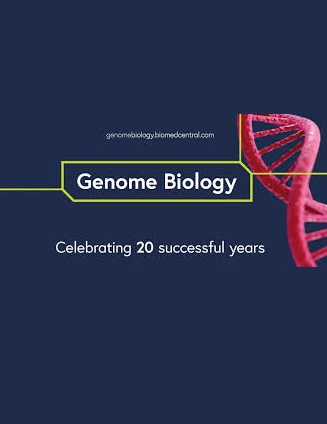瘦体重的多祖先全基因组测序分析
IF 10.1
1区 生物学
Q1 BIOTECHNOLOGY & APPLIED MICROBIOLOGY
引用次数: 0
摘要
瘦体重是身体组成的重要生理组成部分。尽管瘦体重具有很高的遗传性,但迄今为止评估瘦体重(LM)遗传决定因素的研究主要局限于全基因组关联研究(GWAS)和常见变异。利用基于全基因组测序(WGS)的研究,我们旨在发现与LM相关的新遗传变异。我们描述了迄今为止最大的基于WGS的瘦体重荟萃分析,包括来自六个TOPMed队列和路易斯安那骨质疏松研究(LOS)队列的10,729个WGS样本,用双能x射线吸收仪测量。我们确定了七个与LM显著相关的全基因组位点,这些位点在以前的GWAS中没有报道过。我们在英国生物银行样本中部分复制了这些关联。在罕见变异分析中,我们发现了一个新的蛋白质编码基因,DMAC1,与女性全身LM和阑尾LM相关,以及一个与男性阑尾LM相关的长链非编码RNA基因。这两个基因在骨骼肌组织中都表现出显著的高表达水平。我们在动物模型中研究了两个新的瘦质量相关基因EMP2和SSUH2的功能作用。果蝇的EMP2缺乏会导致活动能力显著降低,而不会改变肌肉组织或体脂肪形态,而斑马鱼的SSUH2基因突变会刺激肌肉纤维的生长。我们的综合分析,包括大规模的WGS荟萃分析和功能调查,揭示了与瘦质量性状相关的新的基因组位点和基因,为影响肌肉代谢和肌肉质量调节的途径提供了新的见解。本文章由计算机程序翻译,如有差异,请以英文原文为准。
Multi-ancestry whole genome sequencing analysis of lean body mass
Lean body mass is a crucial physiological component of body composition. Although lean body mass has a high heritability, studies evaluating the genetic determinants of lean mass (LM) have to date been limited largely to genome-wide association studies (GWAS) and common variants. Using whole genome sequencing (WGS)-based studies, we aimed to discover novel genetic variants associated with LM in population-based cohorts with multiple ancestries. We describe the largest WGS-based meta-analysis of lean body mass to date, encompassing 10,729 WGS samples from six TOPMed cohorts and the Louisiana Osteoporosis Study (LOS) cohort, measured with dual-energy X-ray absorptiometry. We identify seven genome-wide loci significantly associated with LM not reported by previous GWAS. We partially replicate these associations in UK Biobank samples. In rare variant analysis, we discover one novel protein-coding gene, DMAC1, associated with both whole-body LM and appendicular LM in females, and a long non-coding RNA gene linked to appendicular LM in males. Both genes exhibit notably high expression levels in skeletal muscle tissue. We investigate the functional roles of two novel lean-mass-related genes, EMP2 and SSUH2, in animal models. EMP2 deficiency in Drosophila leads to significantly reduced mobility without altering muscle tissue or body fat morphology, whereas an SSUH2 gene mutation in zebrafish stimulates muscle fiber growth. Our comprehensive analysis, encompassing a large-scale WGS meta-analysis and functional investigations, reveals novel genomic loci and genes associated with lean mass traits, shedding new insights into pathways influencing muscle metabolism and muscle mass regulation.
求助全文
通过发布文献求助,成功后即可免费获取论文全文。
去求助
来源期刊

Genome Biology
Biochemistry, Genetics and Molecular Biology-Genetics
CiteScore
21.00
自引率
3.30%
发文量
241
审稿时长
2 months
期刊介绍:
Genome Biology stands as a premier platform for exceptional research across all domains of biology and biomedicine, explored through a genomic and post-genomic lens.
With an impressive impact factor of 12.3 (2022),* the journal secures its position as the 3rd-ranked research journal in the Genetics and Heredity category and the 2nd-ranked research journal in the Biotechnology and Applied Microbiology category by Thomson Reuters. Notably, Genome Biology holds the distinction of being the highest-ranked open-access journal in this category.
Our dedicated team of highly trained in-house Editors collaborates closely with our esteemed Editorial Board of international experts, ensuring the journal remains on the forefront of scientific advances and community standards. Regular engagement with researchers at conferences and institute visits underscores our commitment to staying abreast of the latest developments in the field.
 求助内容:
求助内容: 应助结果提醒方式:
应助结果提醒方式:


